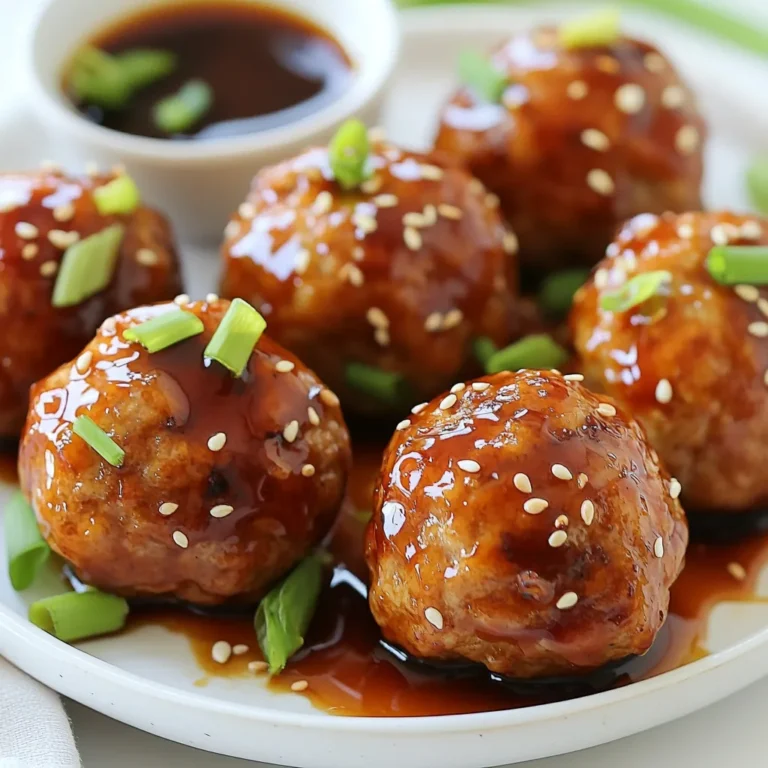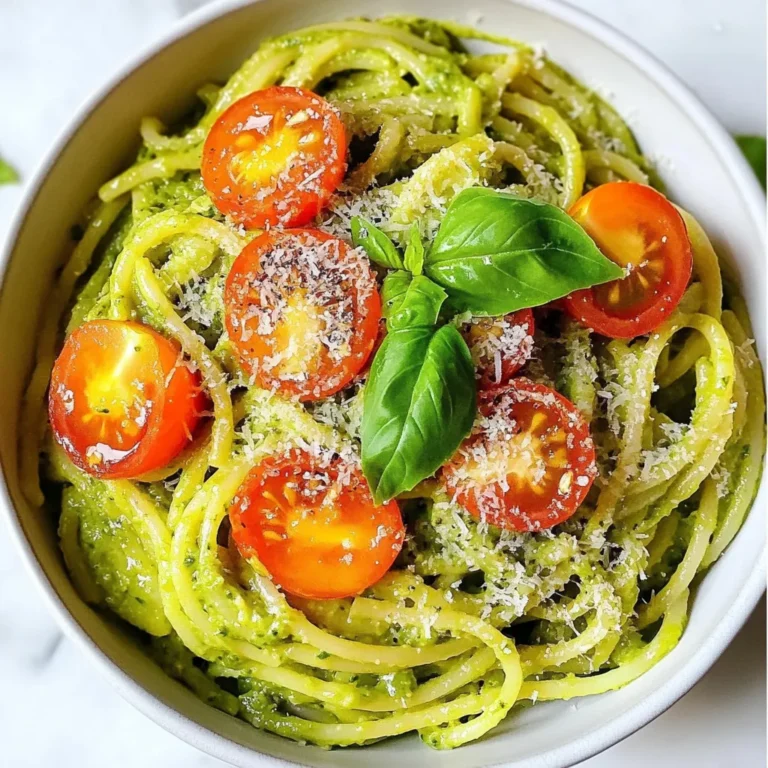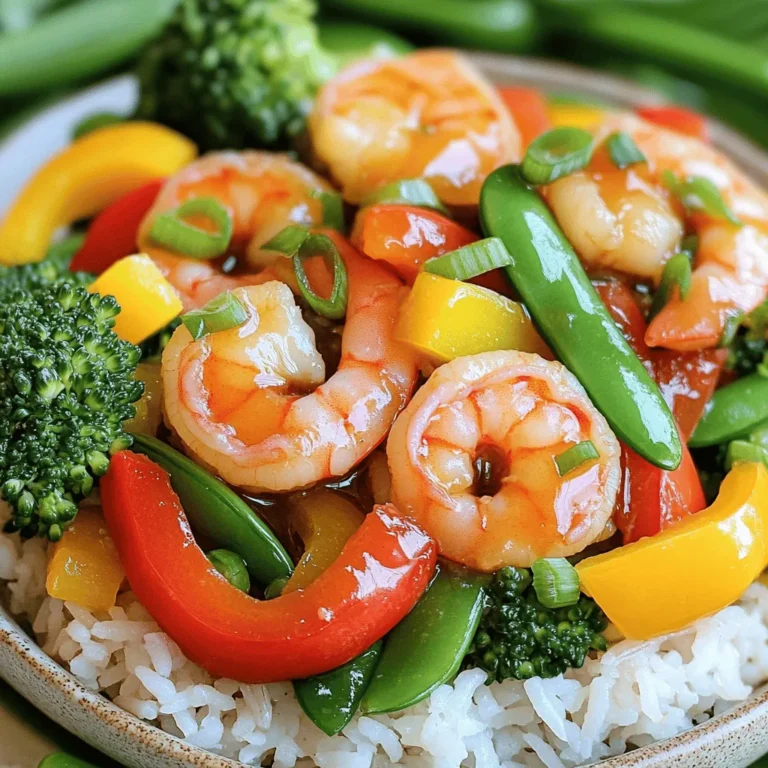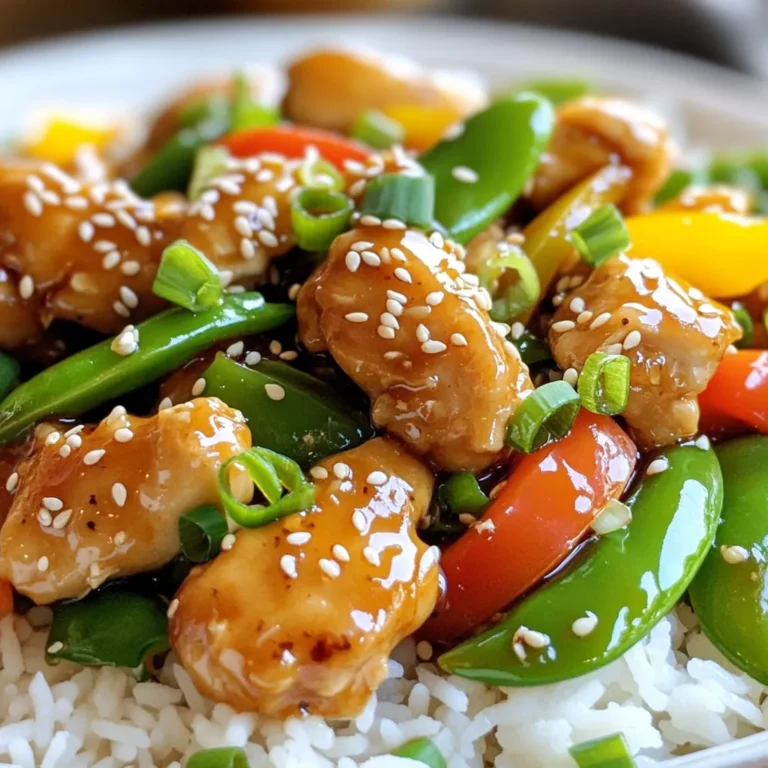Sheet Pan Garlic Herb Turkey Meatballs Flavor Boost
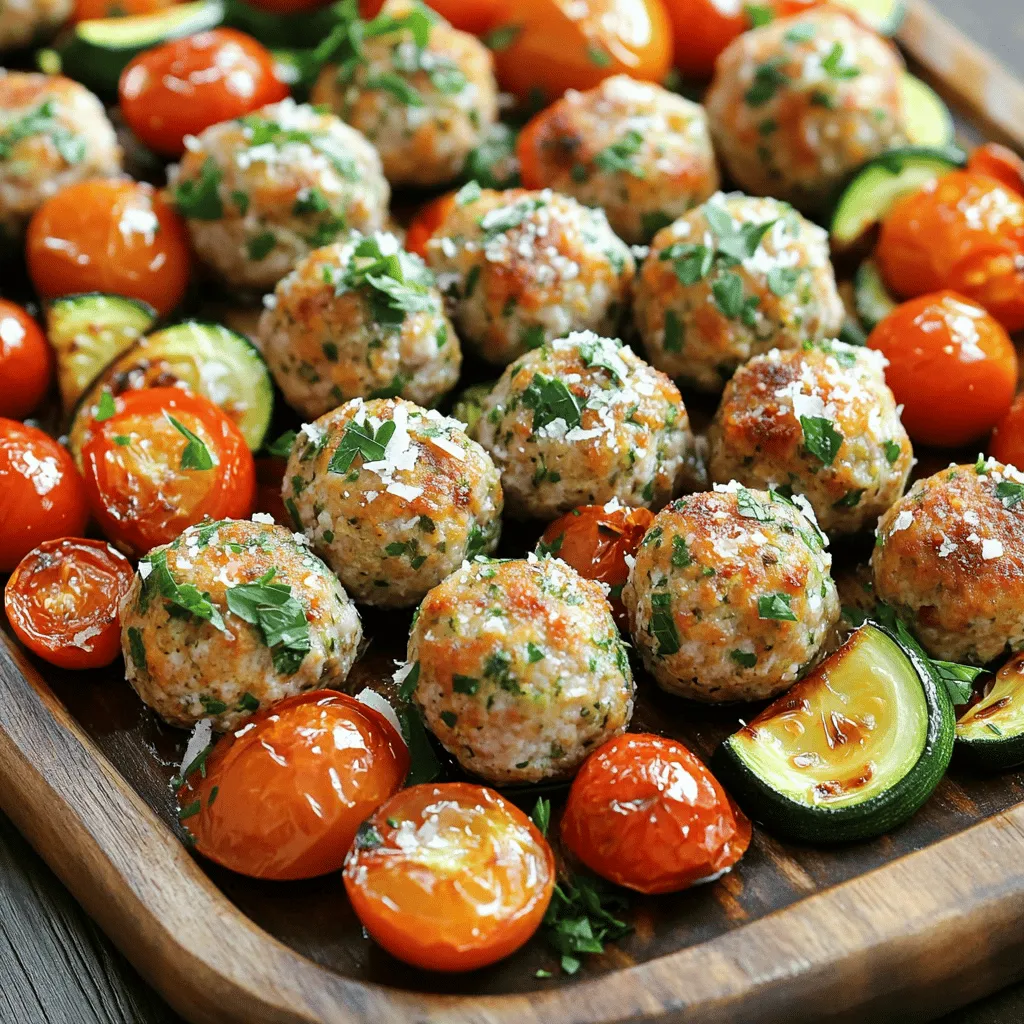
Ready to elevate your dinner game? These Sheet Pan Garlic Herb Turkey Meatballs are the answer! Juicy, bold, and just the right amount of savory, they’re packed with flavors that everyone will love. Plus, they roast alongside vibrant veggies for a complete meal in one pan. Let’s dive into how to make these tasty meatballs that will have your family asking for seconds!
Ingredients
Main ingredients for meatballs
To make the perfect meatballs, start with these key ingredients:
- 1 pound ground turkey
- 1/2 cup breadcrumbs, preferably Italian seasoned
- 1/4 cup freshly grated Parmesan cheese
- 1/4 cup fresh parsley, finely chopped
- 3 cloves garlic, minced
- 1 large egg, lightly beaten
These main ingredients provide a good balance of flavor and texture. The ground turkey is lean and helps keep the meatballs moist. The breadcrumbs bind everything together. Parmesan adds a deep, rich flavor, while parsley and garlic give freshness.
Seasonings and herbs
Seasonings elevate the flavor of your meatballs. Here’s what you need:
- 1 teaspoon dried oregano
- 1 teaspoon dried basil
- 1/2 teaspoon salt
- 1/4 teaspoon freshly ground black pepper
The oregano and basil add warmth and depth. Salt enhances all the flavors, while black pepper gives a slight kick. Use fresh herbs if you can; they have a brighter taste.
Ingredients for roasted vegetables
Roasted veggies add color and nutrition. You will need:
- 1 cup cherry tomatoes, halved
- 1 cup zucchini, sliced into half-moons
- 1 tablespoon olive oil
- 1 tablespoon balsamic vinegar
Cherry tomatoes are sweet and juicy, while zucchini has a mild taste. Olive oil helps them roast nicely, and balsamic vinegar adds a tangy touch. Tossing these veggies with the meatballs makes a tasty meal.
Step-by-Step Instructions
Preparing the oven and baking sheet
First, heat your oven to 400°F (200°C). This high heat helps the meatballs cook and brown nicely. Next, grab a baking sheet and line it with parchment paper. This will make cleanup easy and stop the meatballs from sticking.
Mixing the meatball ingredients
In a large bowl, mix the ground turkey with breadcrumbs, Parmesan cheese, parsley, garlic, oregano, basil, salt, and black pepper. The egg helps bind the mix. I often use my hands for this part. Just make sure everything is mixed well, so each bite is tasty.
Forming and placing the meatballs on the sheet pan
Take a small amount of the turkey mix and roll it into a ball about 1.5 inches wide. I like to roll them gently in my palms to make them smooth. Spread the meatballs evenly on the sheet pan, leaving space between them. This helps them cook evenly.
Preparing and adding the vegetables
In a separate bowl, place the halved cherry tomatoes and sliced zucchini. Drizzle them with olive oil and balsamic vinegar. Sprinkle some salt and black pepper over the veggies. Toss them around until they are well coated. Spread the veggies around the meatballs on the pan.
Baking and checking for doneness
Now, place your sheet pan in the oven. Bake for 20-25 minutes. Keep an eye on the meatballs. Use a meat thermometer to check if they reach 165°F (74°C). The veggies should be soft and slightly caramelized. Once done, take the pan out and let it rest for a few minutes. This helps the flavors blend before serving.
Tips & Tricks
How to achieve the best flavor and texture
To get the best flavor, use fresh herbs like parsley. They add a bright taste. Mix the meatball ingredients well. This helps them stick together and makes a nice texture. Don’t overwork the meat. Gently form the meatballs for a tender bite. Bake them until golden brown. This gives a nice crisp outside while keeping them juicy inside.
Substitutions for ingredients
You can swap ground turkey for lean ground beef or chicken. This will change the taste a bit but still work well. If you don’t have Italian breadcrumbs, plain ones are fine. Just add a bit more seasoning. For cheese, you can use mozzarella or Pecorino. If you want a vegan option, try using lentils or chickpeas instead of turkey.
Serving suggestions and presentation
Serve the meatballs on a large, colorful platter. Add roasted veggies around them for a bright look. Garnish with fresh parsley and a sprinkle of Parmesan. This makes the dish pop. You can also drizzle a bit of balsamic vinegar over the top for extra flavor.
For sides, consider serving with pasta or a fresh salad. These pair well with the meatballs and add variety to your meal.
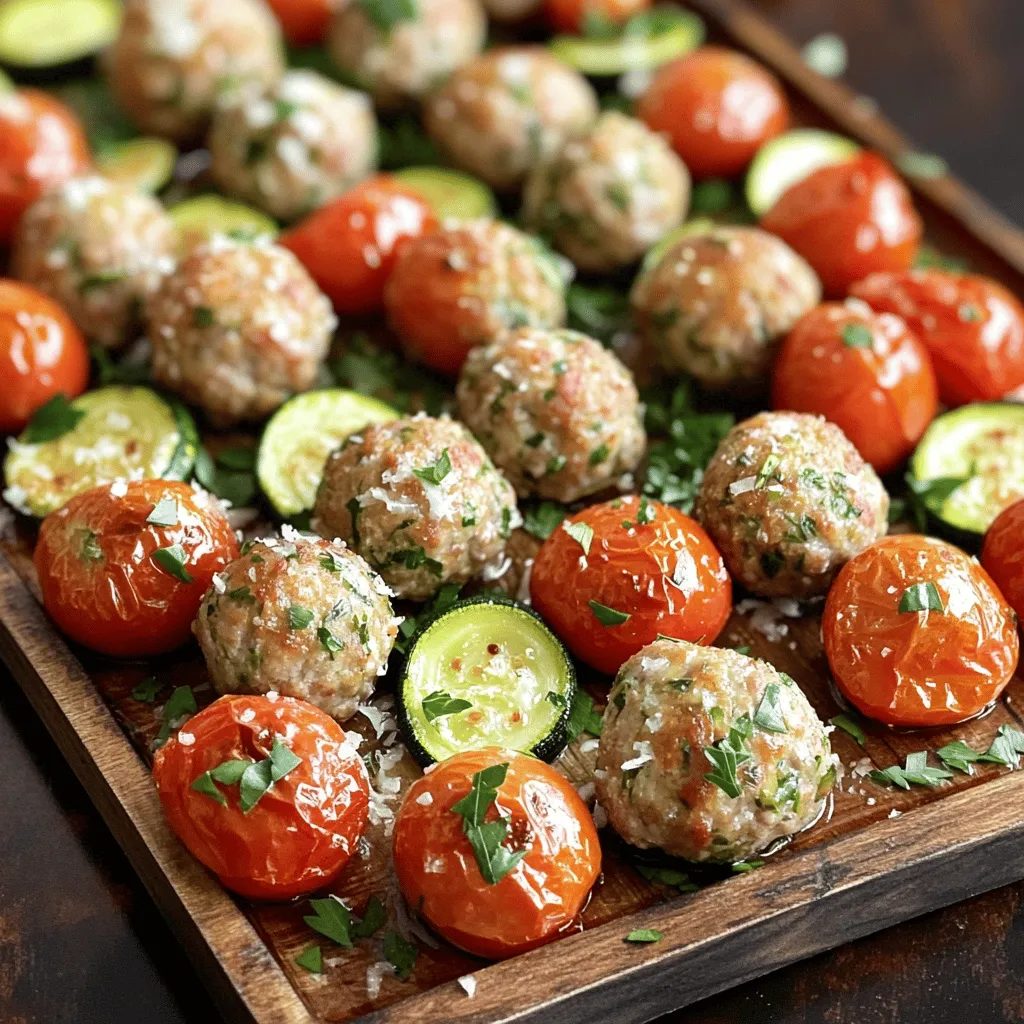
Variations
Alternative ingredients for meatballs
You can switch up the ground turkey for ground chicken or lean beef. If you want a meatless option, try using lentils or chickpeas. You can also replace breadcrumbs with crushed crackers or oats. For a spicy kick, add red pepper flakes or diced jalapeños. Mixing in different cheeses, like feta or mozzarella, will add a creamy touch.
Different vegetables to include
Feel free to mix and match veggies based on what you like. Bell peppers add sweetness and color. Broccoli florets bring a nice crunch. You can also use carrots for a bit of earthiness. If you want something unique, try asparagus or cauliflower. Just remember to cut everything into similar sizes to ensure even cooking.
Serving styles and sauces
Serve the meatballs on a bed of rice or pasta for a hearty meal. You can place them in soft pita bread for a fun twist. Drizzle them with marinara sauce or a tangy yogurt sauce for extra flavor. A sprinkle of fresh herbs like basil or cilantro will brighten up the dish. Don’t forget a squeeze of lemon juice for a fresh finish!
Storage Info
How to store leftovers
After enjoying your meal, let the meatballs cool. Place them in an airtight container. Seal it well to keep the flavors fresh. Store in the fridge for up to three days. If you have leftover veggies, store them in a separate container. This keeps everything tasty.
Best practices for reheating
When you are ready to eat, reheating is easy. Preheat your oven to 350°F (175°C). Place the meatballs and veggies on a baking sheet. Heat for about 10-15 minutes. Check that the meatballs are warm inside. You can also reheat them in the microwave. Use a microwave-safe dish and cover it. Heat in short bursts, checking often.
Freezing recommendations
If you want to save some for later, freezing works well. Place the cooled meatballs and veggies in a freezer bag. Squeeze out extra air before sealing. They can stay in the freezer for up to three months. When you’re ready to eat them, thaw in the fridge overnight before reheating. This keeps the taste and texture just right.
FAQs
How do I know when the meatballs are done?
You can check if the meatballs are done by using a meat thermometer. They should reach 165°F (74°C). This ensures they are safe to eat. The outside should be golden and the inside firm. You can also cut one in half; it should be no longer pink.
Can I use ground chicken instead of turkey?
Yes, you can use ground chicken instead of turkey. Ground chicken has a similar texture and taste. It will still give you a tasty meatball. Just follow the same steps in the recipe.
What can I serve with garlic herb turkey meatballs?
Garlic herb turkey meatballs pair well with many sides. You can serve them with pasta, rice, or a fresh salad. Roasted potatoes or crusty bread also make great options. Try adding a light sauce or gravy for extra flavor.
How long do leftovers last in the fridge?
Leftovers of garlic herb turkey meatballs last about 3 to 4 days in the fridge. Make sure to store them in an airtight container. This keeps them fresh and safe to eat later.
Can I prepare the meatballs ahead of time?
Yes, you can prepare the meatballs ahead of time. Mix the ingredients and shape them into balls. Then, place them in the fridge for a few hours or overnight. You can also freeze them for later use. Just thaw before baking!
This post covered making tasty meatballs and roasted veggies. I shared how to mix, shape, and cook the meatballs. You learned about ingredients, tips, and variations. These tips help you get great flavor and texture. Don’t forget to try different veggies and sauces for fun. Storing and reheating leftovers is easy with my advice. Now you’re ready to create a fun meal. Enjoy your cooking!
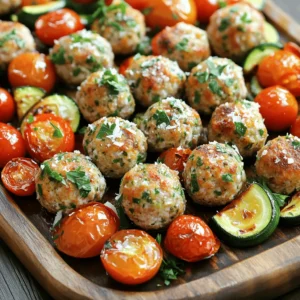

![To make tasty roasted veggie grain bowls, gather these items: - 1 cup quinoa, thoroughly rinsed - 2 cups vegetable broth - 1 zucchini, diced into bite-sized pieces - 1 red bell pepper, diced - 1 cup cherry tomatoes, halved - 1 cup broccoli florets, cut into small pieces - 2 tablespoons olive oil - 1 teaspoon garlic powder - 1 teaspoon smoked paprika - Salt and freshly cracked black pepper, to taste - 1 avocado, halved and sliced - ¼ cup tahini - 2 tablespoons freshly squeezed lemon juice - Fresh herbs (such as parsley or cilantro) for garnish Fresh ingredients make a big difference. Choose bright, firm veggies for the best flavor. Here are some tips to ensure freshness: - Look for vibrant colors: Fresh veggies should be bright and appealing. - Check for firmness: Avoid soft or wrinkled produce. - Buy local when possible: Seasonal veggies taste better and last longer. You can swap some ingredients based on your taste or what you have. Here are easy swaps: - Quinoa: Use farro, rice, or barley instead. - Veggies: Try carrots, asparagus, or sweet potatoes. - Tahini: Substitute with yogurt or nut butter for a different sauce. - Herbs: Use basil, dill, or chives for fresh flavor. Explore these options to make your roasted veggie grain bowls unique! For the complete recipe, check the Full Recipe. Start by preheating your oven to 425°F (220°C). This heat is perfect for roasting. While the oven warms, prepare the quinoa. In a medium saucepan, bring 2 cups of vegetable broth to a boil. Once boiling, add 1 cup of rinsed quinoa. Lower the heat, cover, and let it simmer for about 15 minutes. The quinoa will soak up the broth and become fluffy. After cooking, let it rest for 5 minutes. Fluff it with a fork before serving. While the quinoa cooks, prepare your veggies. Grab a large baking sheet and add the diced zucchini, red bell pepper, halved cherry tomatoes, and broccoli florets. Drizzle 2 tablespoons of olive oil over these veggies. Then, sprinkle 1 teaspoon of garlic powder, 1 teaspoon of smoked paprika, salt, and freshly cracked black pepper. Mix everything well to coat the veggies. Place the baking sheet in the oven and roast for 20-25 minutes. Halfway through, stir the veggies to ensure even cooking. They are done when tender and slightly caramelized. For the tahini sauce, combine ¼ cup of tahini and 2 tablespoons of freshly squeezed lemon juice in a small bowl. Whisk them together until smooth. Add a pinch of salt for flavor. If the sauce seems too thick, thin it out with a little water. Adjust it until you reach your desired consistency. You can check the [Full Recipe] for more details. When making roasted veggie grain bowls, avoid overcooking your vegetables. They should be tender but not mushy. Also, don't skip the seasoning. A little salt and pepper make a big difference. Lastly, ensure the quinoa is fluffed well after cooking. This helps the grains mix nicely with the veggies. To boost flavor, try marinating the veggies in olive oil and spices before roasting. You can add herbs like thyme or rosemary for a fresh taste. For texture, consider adding nuts or seeds. Toasted sunflower seeds or crunchy almonds add a nice bite. Roasted veggie grain bowls are great for a filling meal. Pair them with a side salad for more greens. You can also add a protein like grilled chicken or chickpeas for extra nutrition. For a wow factor, drizzle more tahini sauce on top or sprinkle with feta cheese. Check out the Full Recipe for more ideas! {{image_4}} You can switch up the grains in your bowl. Try brown rice, farro, or barley. Each grain brings a different taste and texture. Quinoa is great, but experimenting keeps it fun. You can also use millet for a unique twist. These grains offer more fiber and nutrients. Explore different cooking times for each grain to get them just right. Seasonal veggies make your grain bowl fresh and vibrant. In spring, use asparagus and peas. Summer calls for corn and eggplant. Fall brings sweet potatoes and kale. In winter, think about Brussels sprouts and root vegetables. Each season gives you new flavors and colors. Using fresh, local produce can boost taste and nutrition. Toppings can elevate your bowl. Consider adding nuts or seeds for crunch. Roasted chickpeas add protein and flavor. You might also try feta cheese for a salty kick. Fresh herbs like basil or cilantro can brighten the dish. A squeeze of lime or lemon juice adds freshness. For a spicy touch, drizzle hot sauce or sprinkle red pepper flakes. Each addition brings a new layer of flavor to your meal. Check out the Full Recipe for more ideas! To keep your roasted veggie grain bowls fresh, store them in airtight containers. Make sure to let the bowls cool down before sealing them. This helps prevent moisture buildup, which can make your veggies soggy. You can keep them in the fridge for up to four days. When you’re ready to enjoy your leftovers, reheat them gently. Use the microwave for quick heating. Heat in short bursts, stirring in between, to avoid hot spots. You can also warm them in a pan over low heat. Add a splash of water or broth to keep them moist. Meal prepping is a great way to save time. You can make extra quinoa and roast a variety of veggies. Store them separately in the fridge for easy access. This way, you can mix and match different flavors throughout the week. Just assemble the bowls when you're ready to eat. For a detailed recipe, check the Full Recipe for all the steps! Roasted veggie grain bowls are healthy meals filled with grains and vegetables. They combine cooked grains, like quinoa, with roasted veggies. This mix creates a tasty and colorful dish. You get fiber, vitamins, and minerals in every bite. The flavors blend well, making each bowl satisfying and fun to eat. To make roasted veggie grain bowls, follow these steps: 1. Preheat your oven to 425°F (220°C). 2. Cook 1 cup of quinoa in 2 cups of vegetable broth. Let it simmer until fluffy. 3. Prepare your veggies: dice zucchini, red bell pepper, and halve cherry tomatoes. Add broccoli florets. 4. Toss the veggies with olive oil, garlic powder, smoked paprika, salt, and pepper. 5. Roast the veggies for 20-25 minutes until tender and slightly caramelized. 6. Mix tahini with lemon juice, adding water if needed for the right texture. 7. Assemble the bowls with quinoa, roasted veggies, and avocado slices on top. 8. Drizzle with tahini sauce and add fresh herbs for garnish. You can find the full recipe above for more detailed steps. Yes, you can customize this recipe. Use different grains like brown rice or farro. Change the veggies based on what you like or what is in season. You can also add proteins like chickpeas or grilled chicken. Experiment with different sauces or toppings to make the dish your own. This flexibility makes roasted veggie grain bowls perfect for everyone. This blog covered how to make delicious roasted veggie grain bowls. We discussed key ingredients, focusing on freshness and substitutions. I shared step-by-step instructions for prepping, roasting, and creating a tasty tahini sauce. You learned helpful tips to avoid mistakes and enhance flavor. Variations allowed you to experiment with grains and veggies. Lastly, I provided storage tips to keep leftovers fresh. Roasted veggie grain bowls are flexible and fun. You can mix and match to fit your taste. Enjoy experimenting!](https://dishtreats.com/wp-content/uploads/2025/07/945baa8c-ba42-4ceb-8d11-39d9a326283a-768x768.webp)
